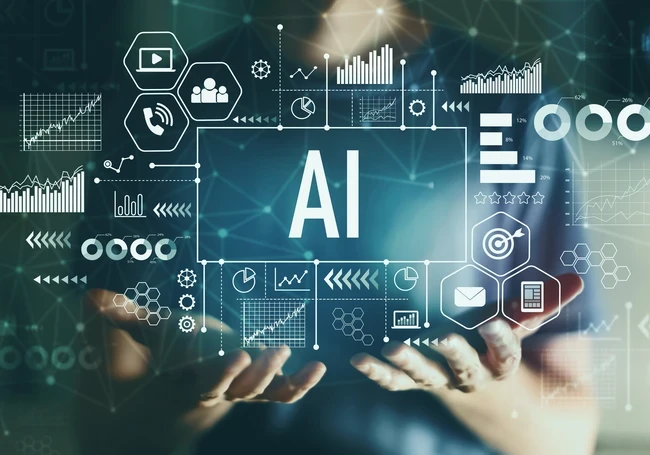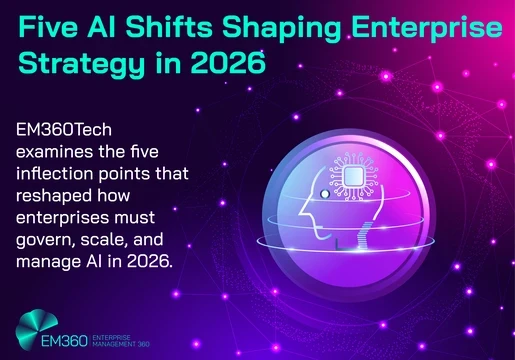Artificial Intelligence is changing the way enterprises run their IT operations, and AIOps is proving to be one of the most effective uses of AI. Modern IT systems are spread across data centres, multi-cloud platforms, and edge environments. These environments generate a continuous stream of operational data covering metrics such as Central Processing Unit (CPU) and Random Access Memory (RAM) usage, application response times, security logs, and cloud costs. Without automation, managing this level of complexity is almost impossible.
This is where AIOps platforms come into play. By applying machine learning, automation, and predictive analytics to IT operations data, they enable enterprises to detect issues proactively, resolve incidents faster, and optimise performance at scale. Unlike experimental AI projects, AIOps addresses a digitised, measurable environment, making its benefits tangible: reduced downtime, lower costs, and improved customer experience.

What is AIOps?
To link this all together, it's important to understand first what Artificial Intelligence for IT operations (AIOps) is. AIOps platforms use machine learning and advanced analytics to make enterprise IT operations smarter and more efficient. They help DevOps teams accelerate software deployments, monitor system loads, forecast demand spikes, and automatically scale cloud resources when necessary. Advanced AIOps tools detect anomalies, prioritise alerts, and escalate only the most critical issues, so IT teams focus on serious problems without being overwhelmed by the operational noise surrounding them.
Beyond performance optimisation, AIOps also strengthens security. By analysing unusual activity patterns, these platforms support both DevOps and security teams by identifying potential threats while keeping operations running smoothly. In essence, AIOps combines predictive intelligence, automation, and real-time insights to improve how organisations manage complex IT environments.
But AIOps is only part of the picture. A new layer of intelligence is emerging with generative AI, which takes operational insights a step further by creating new solutions and automating decision-making.

What is Generative AI?
Generative AI refers to AI systems capable of creating new content, insights, or solutions, often using large language models or other foundation models. In the enterprise, generative AI complements AIOps by automating knowledge workflows, generating intelligent recommendations, and providing predictive insights. For example, it can summarise log data, suggest optimisations for IT operations, or even draft incident response procedures. While AIOps focuses on monitoring and operational efficiency, generative AI extends the intelligence layer, enabling more proactive decision-making and automating repetitive tasks that were previously manual.

AIOps and Generative AI
Artificial Intelligence is reshaping enterprise operations. According to industry research, 82 per cent of companies are now exploring or actively using AI in operations to drive efficiency, reduce costs, and improve customer engagement. From automating support workflows to uncovering actionable insights from massive data sets, AI solutions are fundamentally changing how modern organisations operate.
Within this landscape, AIOps and generative AI stand out as two of the most practical enterprise applications. AIOps focuses on monitoring, analysing, and automating IT operations in real time, helping teams anticipate issues before they escalate. Generative AI builds on this foundation by creating new insights, recommendations, and workflows, allowing enterprises not just to react more effectively, but to proactively shape operations and strategy.
Together, they form a powerful combination, AIOps ensures reliability and efficiency across complex IT environments, while generative AI extends intelligence into decision-making, automation, and knowledge management. When combined, these capabilities are redefining enterprise value, making AI not just a support tool but a driver of business outcomes.
How AIOps and Generative AI Drive Enterprise Value
Enterprise operations are evolving as AI takes on a central role in managing the growing complexity of IT systems and business processes. AIOps and generative AI tackle this shift from different angles. AIOps strengthens reliability by processing massive volumes of logs, metrics, and events to detect anomalies, automate root cause analysis, and minimise downtime. Generative AI complements this by creating new outputs from existing data by drafting reports, summarising documentation, generating customer responses, or modelling operational scenarios extending intelligence beyond monitoring into decision support and automation.
Adoption data illustrates the growing impact of these technologies. Customer support is the dominant use case, representing 49 per cent of initiatives, with issue resolution alone accounting for 35 per cent. Marketing, IT operations, and research and development are also notable areas of deployment. Technology companies lead adoption, and North America remains the most active region, each representing 56 per cent of implementations.
These patterns demonstrate that enterprises are leveraging AIOps and generative AI not just for efficiency, but to create intelligent systems capable of anticipating problems, automating decisions, and generating actionable insights across the organisation. With a clear understanding of these complementary technologies, it’s easier to see why certain enterprises stand out.

Top 10 Enterprise Leaders in AIOps and Generative AI Infrastructure
In 2025, enterprises are navigating an increasingly complex IT landscape, with massive volumes of data and a growing need for real-time decision-making. AIOps and generative AI have emerged as key technologies for tackling these challenges. AIOps platforms use machine learning to automate IT operations, improve efficiency, and reduce downtime. At the same time, generative AI is transforming business processes by generating new insights and content from existing data.
The organisations listed below are recognised for providing enterprise-ready AI platforms that balance performance, security, and measurable business impact. They were selected based on AI capabilities, scalability, operational automation, and demonstrable return on investment (ROI). Each organisation brings a unique combination of strengths such as predictive analytics, intelligent automation, or generative insights that enables enterprises to anticipate issues, optimise operations, and make smarter decisions at scale. These are the leaders setting the standard for AIOps and generative AI in 2025.
Here are the top 10:
1. BigPanda
Overview: BigPanda provides event correlation and automation for IT operations, consolidating alerts from multiple monitoring and observability tools into actionable insights. By applying machine learning to detect anomalies and correlate related events, the platform helps IT teams prioritise critical incidents and respond faster. Its automated workflows also standardise incident response, freeing teams from repetitive troubleshooting.
Why it stands out: BigPanda’s AI-driven correlation engine distinguishes meaningful signals from noise and integrates structured machine data with human knowledge. This reduces alert fatigue, accelerates incident resolution, and delivers intelligence that connects operational events with business context.
Enterprise impact: The platform enables enterprises to manage tens of thousands of alerts in hybrid or multi-cloud environments, improving Mean Time to Repair (MTTR), improving service reliability, and streamlining operational workflows. Real-time insights help IT teams proactively address potential issues before they affect end-users, supporting continuity and operational efficiency.
Pros: Highly scalable, integrates with most monitoring stacks and reduces operational overhead.
Cons: Complex IT environments may require tailored configurations; advanced features often need training to be fully leveraged.
Use Cases: Enterprises with hybrid or multi-cloud infrastructures that generate high alert volumes and need rapid incident prioritisation.

2. Dynatrace
Overview: Dynatrace delivers full-stack observability powered by its Davis® AI engine, providing automated insights across cloud-native applications, microservices, and infrastructure. The platform consolidates metrics, traces, and logs into a unified view, allowing IT and DevOps teams to detect anomalies, understand root causes, and maintain high performance across multi-cloud environments.
Why it stands out: Dynatrace is recognised for its advanced automated root cause analysis and predictive problem resolution. In 2025, it was featured prominently in Forrester’s AIOps Wave and named a leader in Gartner’s Magic Quadrant for Observability Platforms for the 15th consecutive year. These accolades highlight the platform’s effectiveness in reducing downtime, mitigating operational risk, and supporting enterprise-scale observability.
Enterprise impact: Enterprises use Dynatrace to turn complex IT data into actionable intelligence, accelerating innovation, improving digital experiences, and enhancing operational efficiency. By providing predictive insights and automation, the platform helps organisations proactively maintain service reliability and optimise IT performance.
Pros: In-depth AI-driven visibility across applications and infrastructure, proactive anomaly detection, and strong multi-cloud support.
Cons: Implementation can be resource-intensive; teams often need dedicated training for effective adoption.
Use cases: Organisations requiring detailed performance monitoring of complex applications, particularly in highly dynamic cloud or micro service environments.

3. Datadog
Overview: Datadog is a cloud-native observability platform that integrates logs, metrics, traces, and security telemetry into a unified system. Enriched with AI, it helps IT and engineering teams monitor application performance and infrastructure health across dynamic cloud environments and DevOps workflows.
Why it stands out: Datadog’s predictive alerting and anomaly detection catch issues before they escalate. It automatically detects critical problems in continuous integration (CI) and Continuous Deployment (CD) pipelines, monitors deployments in real time, and identifies regressions, slow queries, traffic spikes, and other operational risks enabling teams to respond faster and minimise business impact.
Enterprise impact: For large organisations, Datadog improves visibility across distributed systems, supporting proactive management of production environments. By monitoring code throughout development and automating rollbacks when needed, it reduces downtime, accelerates innovation cycles, and improves service reliability. This enables IT and DevOps teams to allocate resources more effectively, ultimately boosting overall business performance and customer experience.
Pros: Unified observability, automated workflows, extensive ecosystem integrations.
Cons: Costs can escalate with usage; full adoption requires a significant learning curve.
Use cases: Companies practising DevOps at scale or managing highly complex cloud applications, where fast detection and resolution of incidents is a priority.

4. BMC Helix AIOps
Overview:
BMC Helix AIOps applies AI and machine learning across multi-cloud, mainframe, and edge environments to deliver reliable, self-healing IT operations. The organisation collects and analyses data from multiple sources, events, metrics, logs, topology, tickets, and knowledge articles, providing a unified view of infrastructure and service health. By combining AI with IT domain expertise, it helps organisations understand complex interdependencies and quickly isolate root causes.
Why it stands out:
BMC Helix enables faster incident resolution by automatically correlating alerts and providing actionable insights, reducing operational noise and manual intervention. Its holistic approach allows IT teams to anticipate issues before they impact end users, making it particularly valuable for enterprises managing complex, hybrid, or distributed IT environments.
Enterprise impact: For large organisations, BMC Helix improves operational resilience, reducing downtime and service disruptions across critical business systems. Automating routine remediation and supporting proactive problem management frees IT teams to focus on strategic initiatives. Enterprises benefit from improved Mean Time to Resolution (MTTR), better resource allocation, and more predictable service delivery. Its multi-source analytics supports informed decision-making and continuous optimisation of both cloud-native and legacy systems.
Pros: Mature AI insights, predictive analytics and supports hybrid IT.
Cons: Implementation can be complex and it requires dedicated personnel and training.
Use cases: Global enterprises seeking proactive IT operations management, especially in hybrid or distributed environments.

5. LogicMonitor
Overview: LogicMonitor is a cloud-based infrastructure monitoring platform that uses AI and machine learning to deliver predictive maintenance, anomaly detection, and actionable operational insights. The platform continuously collects telemetry from servers, networks, applications, and cloud resources, creating a single, unified view of complex IT environments. By correlating performance data across multiple layers, LogicMonitor helps IT teams identify potential issues before they escalate, optimise resource allocation, and ensure high availability of critical systems.
Why it stands out: LogicMonitor provides proactive detection of potential issues before they impact business operations, enabling IT teams to anticipate system failures, performance bottlenecks, or capacity constraints. By using AI-driven predictive analytics, the platform allows enterprises to prioritise critical alerts, optimise resource allocation, and maintain high service reliability, ensuring that business operations continue uninterrupted.
Enterprise Impact: For large organisations, LogicMonitor enables proactive IT management, reducing downtime, improving service reliability, and supporting strategic decision-making. Its predictive analytics allow enterprises to anticipate load spikes, capacity constraints, and infrastructure bottlenecks, which directly improve operational efficiency and cost optimisation. As a result, by automating alerting and monitoring workflows, IT teams can focus on innovation and business priorities rather than manual troubleshooting, making LogicMonitor a key enabler of digital transformation at scale.
Pros: Scalable monitoring, predictive analytics, automated alerting, multi-cloud coverage.
Cons: Smaller organisations may find pricing high; advanced customisation may be required.
Use cases: Enterprises seeking proactive infrastructure monitoring, performance optimisation, and improved uptime across hybrid IT environments.

6. ServiceNow IT Operations Management (ITOM)
Overview: ServiceNow IT Operations Management (ITOM) integrates AIOps capabilities with workflow automation to deliver a comprehensive platform for monitoring, managing, and optimising enterprise IT environments. By ingesting and analysing data from applications, servers, networks, and cloud resources, ITOM provides real-time insights into system health, service dependencies, and operational risks. Its AI-driven analytics help automatically detect anomalies, predict potential outages, and trigger remediation workflows, while its automation capabilities streamline tasks such as incident management, change approvals, and service provisioning.
Why it stands out: ServiceNow ITOM combines operational intelligence with workflow automation, enabling enterprises to streamline IT processes, reduce manual intervention, and accelerate incident response. By providing real-time insights into system health, dependencies, and service performance, the platform helps IT teams prioritise critical issues, anticipate outages, and maintain high service reliability.
Enterprise impact: For large-scale enterprises, ServiceNow ITOM enables end-to-end operational visibility and proactive management, reducing downtime and improving service reliability across complex IT environments. Automating repetitive IT tasks and standardising processes lowers operational costs, enhances compliance, and frees IT staff to focus on strategic initiatives. Its integration with IT service management (ITSM) tools ensures that incident response and change management are aligned with business priorities, helping organisations maintain business continuity, accelerate time-to-resolution, and support enterprise-wide operational efficiency.
Pros: Tight ITSM integration, highly scalable, and automation reduces manual effort.
Cons: Implementation can be time-intensive; advanced AI features require specialised expertise.
Use Cases: Large enterprises aiming to improve operational efficiency, accelerate incident resolution, and standardise IT service management.

7. Sumo Logic
Overview: Sumo Logic provides a cloud-native machine data analytics platform that combines observability, real-time monitoring, and AI-driven anomaly detection. The platform ingests data from applications, servers, networks, and security tools, offering a unified view of IT operations and security posture. By correlating metrics, logs, and traces across diverse systems, Sumo Logic enables enterprises to detect anomalies, uncover root causes, and respond to incidents faster. Its AI and machine learning capabilities help reduce alert fatigue by prioritising critical events, allowing IT and security teams to focus on the most impactful issues.
Why it stands out: Sumo Logic offers advanced log analytics and AI-driven anomaly detection, providing enterprises with real-time visibility into both IT operations and security posture. By correlating data across applications, servers, networks, and cloud services, the platform enables IT and security teams to quickly identify incidents, detect potential threats, and respond before issues impact business performance.
Enterprise impact: For large organisations, Sumo Logic delivers dual benefits: operational intelligence and improved security monitoring. Enterprises can proactively identify performance bottlenecks, predict potential outages, and detect security threats before they escalate. This proactive visibility reduces downtime, improves service reliability, and enhances compliance with industry regulations. By integrating IT operations and security insights into a single platform, Sumo Logic helps enterprises align IT performance with business outcomes, enabling faster decision-making and better allocation of resources across complex hybrid and multi-cloud environments.
Pros: Real-time monitoring, machine learning analytics and integrated security insights.
Cons: Cost can be high for smaller deployments; advanced features require specialised knowledge.
Use cases: Organisations needing concurrent operational intelligence and security visibility for hybrid or cloud environments.

8. ScienceLogic
Overview: ScienceLogic provides an AIOps platform that combines AI-driven insights, automation, and multi-layer infrastructure monitoring to manage complex IT environments, including on-premises systems, hybrid infrastructures, and multi-cloud deployments. The platform collects telemetry from applications, servers, networks, and cloud services, correlates events, and applies machine learning to identify anomalies, predict potential failures, and recommend remediation actions. ScienceLogic also integrates with IT service management (ITSM) and orchestration tools, enabling seamless automation of incident response, change management, and service provisioning across diverse IT landscapes. Observability has become mission-critical, but not all platforms are created equal. The Gartner® Magic Quadrant™ for Observability Platforms recognised ScienceLogic as a visionary, highlighting its innovative approach to AI-driven monitoring and hybrid IT operations.
Why it stands out: ScienceLogic provides hybrid IT support and AI-driven workflow automation, making it particularly valuable for enterprises managing complex, multi-cloud and hybrid infrastructures. Its predictive analytics enable IT teams to anticipate performance issues, detect anomalies, and automate remediation across diverse environments, reducing manual effort and operational risk.
Enterprise impact: For large organisations, ScienceLogic enables proactive, intelligent IT operations that reduce manual workloads, minimise unplanned downtime, and maintain service consistency across hybrid environments. Its predictive analytics allow enterprises to anticipate system issues, optimise resource allocation, and plan capacity effectively, improving overall performance and reliability. By automating repetitive operational tasks, ScienceLogic frees IT teams to focus on strategic initiatives, supports faster incident resolution, and aligns IT operations with business objectives. This combination of insight, automation, and operational control allows enterprises to drive efficiency, reduce operational costs, and enhance the resilience of mission-critical systems.
Pros: Comprehensive hybrid monitoring, predictive AI insights and strong automation support.
Cons: Implementation requires significant configuration and dedicated resources.
Use Cases: Enterprises managing multi-cloud or hybrid IT systems seeking operational efficiency, consistency, and reduced manual workloads.

9. New Relic
Overview: New Relic delivers full-stack observability across applications, infrastructure, and cloud environments, combining real-time telemetry with AI-powered analytics and anomaly detection. By aggregating metrics, logs, traces, and events into a single interface, IT teams gain end-to-end visibility into system performance and operational health, with predictive insights that help anticipate issues before they impact business outcomes. Customisable dashboards allow teams to monitor critical KPIs and optimise workflows across complex, distributed environments. It has also been recognised as a leader in the 2025 Gartner® Magic Quadrant™ for Observability Platforms for the 13th consecutive year. New Relic is being celebrated for its AI innovation, agentic capabilities, and customer-centric design. Its platform helps enterprises manage digital complexity, improve operational efficiency, and drive growth through actionable, AI-enhanced insights.
Why it stands out: New Relic offers AI-driven anomaly detection and predictive monitoring, enabling enterprises to proactively identify and resolve performance issues before they impact business operations. Its full-stack observability across applications, infrastructure, and cloud environments provides IT teams with real-time insights, root-cause analysis, and actionable recommendations, allowing for faster decision-making and incident resolution.
Enterprise impact: For large enterprises, New Relic enables proactive IT operations by identifying potential issues before they escalate into downtime, reducing operational risk and ensuring business continuity. The platform enhances visibility across distributed and cloud-native applications, helping teams optimise performance, improve user experience, and prioritise resources effectively. By providing actionable predictive insights, New Relic supports faster decision-making, capacity planning, and incident resolution, making it a key tool for enterprises aiming to align IT performance with strategic business objectives. Its intelligent observability platform also supports DevOps and site reliability engineering teams, enabling automation of operational workflows and faster innovation cycles in hybrid and multi-cloud environments.
Pros: Unified data platform, customisable dashboards and predictive analytics.
Cons: Setup and configuration can be difficult; generative AI is not fully integrated across all workflows.
Use cases: Enterprises requiring comprehensive monitoring of distributed applications, cloud-native environments, and hybrid infrastructures.

10. Micro Focus (OpenText)
Overview: Micro Focus, now part of OpenText, delivers enterprise-grade IT operations solutions that integrate AIOps, analytics, and automation to manage both modern cloud infrastructures and legacy systems. The platform collects, correlates, and analyses data from diverse sources, including applications, servers, networks, and mainframes, providing a unified view of operational health. Its AI-driven insights enable proactive issue detection, root cause analysis, and automated remediation, while workflow automation helps streamline repetitive operational tasks across hybrid environments.
Why it stands out: Micro Focus, now part of OpenText, delivers strong integration with legacy enterprise systems alongside IT operations management, making it particularly valuable for organisations managing complex or hybrid IT environments. Its platform combines AIOps, analytics, and workflow automation to provide predictive insights, proactive issue detection, and streamlined remediation across both traditional and modern infrastructures.
Enterprise impact: For enterprises with complex or hybrid IT landscapes, Micro Focus/OpenText ensures reliable, predictable, and efficient operations. The platform enables IT teams to minimise downtime, optimise resource utilisation, and maintain high service availability, even when managing a mix of legacy and cloud systems. Aligning operational processes with business objectives supports strategic decision-making, operational resilience, and cost-effective IT management. Its automation and integration capabilities allow organisations to scale operations, reduce manual effort, and improve responsiveness to changing business demands, making it particularly valuable for large enterprises with critical infrastructure dependencies.
Pros: Enterprise-grade reliability, workflow automation and extensive system integration.
Cons: Implementation can be complex; it requires dedicated support teams.
Use cases: Large organisations managing hybrid IT environments or balancing legacy infrastructure with cloud deployments.

What to look for in an AIOps and Generative AI Vendor
Selecting the right AIOps or generative AI platform is a strategic decision that can significantly impact enterprise operations, IT efficiency, and business outcomes. When evaluating vendors, enterprises should carefully assess the following criteria:
- Scalability and flexibility: Ensure the platform can handle hybrid, multi-cloud, and large-scale environments, adapting to changing infrastructure demands without compromising performance.
- AI capabilities: Look for predictive analytics, anomaly detection, and automated remediation features that can proactively identify and resolve issues before they impact operations.
- Integration: The platform should seamlessly connect with existing IT Service Management (ITSM), DevOps, and monitoring tools, avoiding silos and enabling a unified operational view.
- Automation: Evaluate and see if the solution reduces manual workloads through intelligent workflow automation, freeing IT teams to focus on strategic initiatives rather than routine operational tasks.
- Security and compliance: Operational data, logs, and alerts must be handled securely and comply with enterprise standards, including data privacy and regulatory requirements.
Business impact metrics: The vendor should provide clear, measurable outcomes such as reduced downtime, faster incident resolution, improved service reliability, and enhanced customer experience.

Maximising value with the AIOps
Choosing the right AIOps or generative AI solution is a strategic decision that shapes operational efficiency and business outcomes. The enterprises highlighted in this Top 10 guide were selected because they demonstrate a proven ability to deliver enterprise-ready solutions that balance scalability, security, and measurable impact.
These enterprises excel in providing predictive analytics, anomaly detection, automated remediation, and workflow automation, enabling IT teams to proactively manage complex hybrid and multi-cloud environments. They also integrate seamlessly with existing ITSM, DevOps, and observability tools, ensuring that AI-driven insights translate into actionable results.
From improving uptime and reducing operational risk to improving customer experience and supporting strategic decision-making, these Top 10 enterprises set the standard for how AI can transform IT operations. By combining advanced AIOps capabilities with generative AI, they empower organisations to not only monitor and respond but also create insights, automate processes, and drive continuous innovation, which is why they stand out as leaders for 2025 and beyond.







Comments ( 0 )